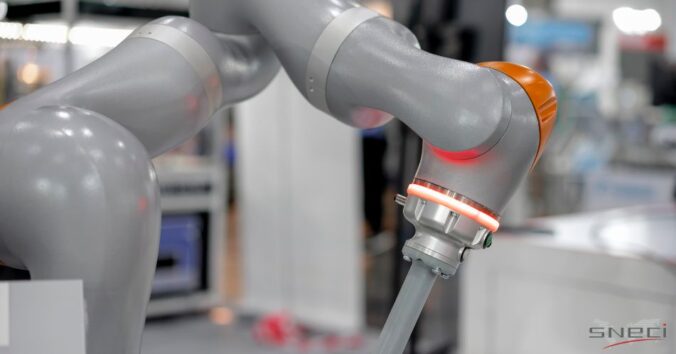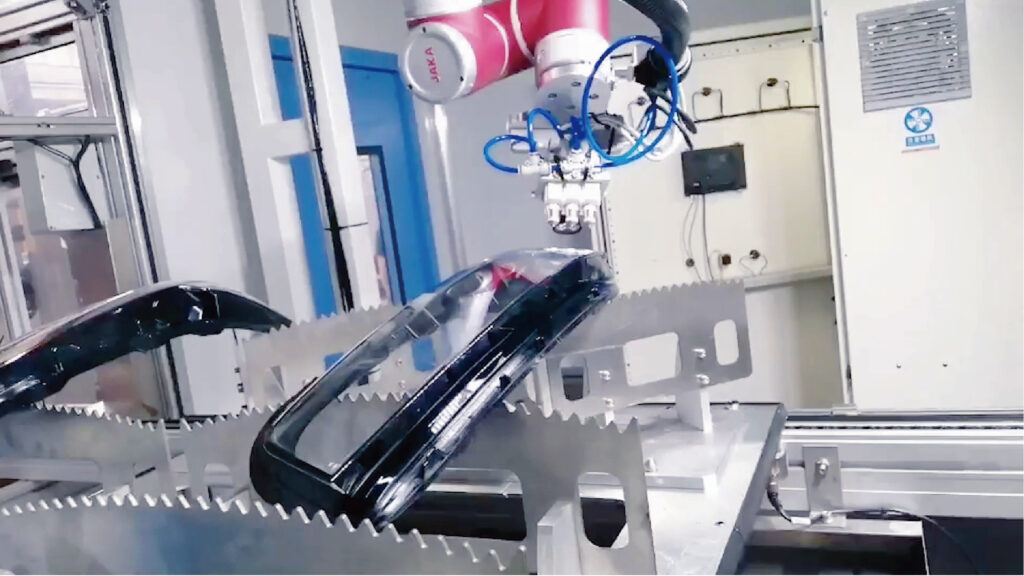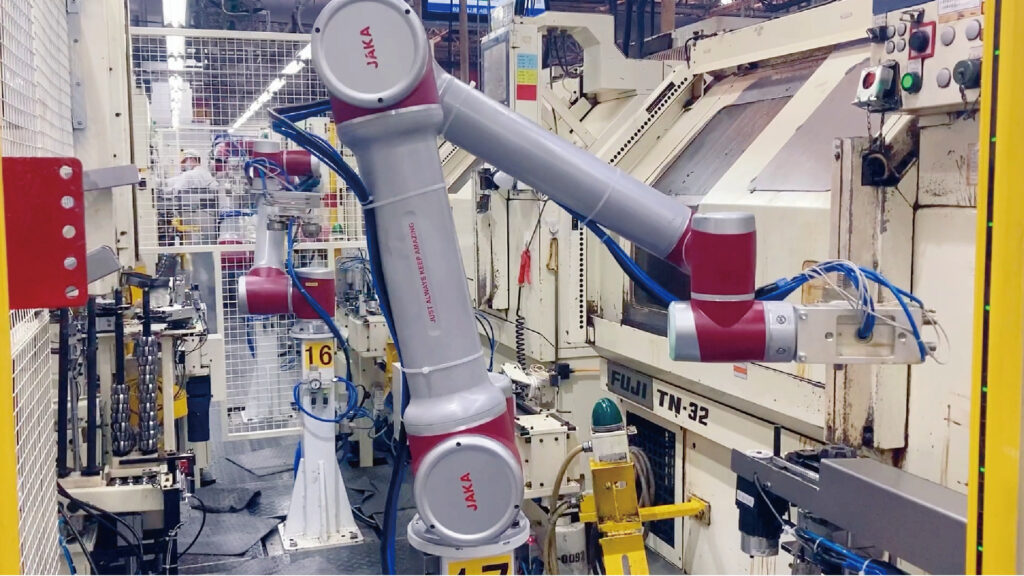The Top 5 Reasons Why Automotive Industry Should Invest In Cobots

Historically, the automotive industry has always been at the forefront of automated manufacturing. From Ford’s revelatory 1913 assembly line, to electrical device innovations from Japanese industrialists in the 1930s, to the first truly operational robot arms, the Stanford Arm and MIT’s Silver Arm in the late 60s and early 70s, the history of industrial robotics has largely been driven by the desire to more efficiently produce vehicles. Even today, the largest market for industrial robotics remains automotive robotics, according to Statista.
Today we are going to see what is the importance of Cobots and why Automotive Industry Should Invest In Cobots through the explanation of our partner JAKA Robotics.
Cobots definition:
The word cobot appeared for the first time in 1999, it is the contraction between the words “cooperation” and “robotics”. The principle of cooperation is extremely important in cobotics, which tries to correspond to this ideal as much as possible. Indeed, the main distinction of the cobot is its interaction with humans.
It is not intended to be independent, or programmed for a task that it will repeat forever in its corner. Whether it is piloted in real time, configured in advance, or working alongside a human, the collaborative robot is made to collaborate with the operator, it is his assistant (it is estimated that only 10% of jobs are fully automatable). A 2016 study by researchers at the prestigious MIT actually showed that human-robot collaboration was 85% more productive than a human, or a robot working alone.
Over the last ten years or so, there has been a turning point in the automation of automotive manufacturing: the collaborative robot, or ‘cobot’ for short. Unlike their traditional counterparts, cobots can operate safely together with human workers, or independently. Their advanced software, vision and AI systems endow them with high agility and adaptability, allowing them to be integrated with new or existing production lines seamlessly. What exactly are they capable of, and how does this help the automotive industry?
What are the main common application of cobots :
The options for how to apply cobots in automotive manufacturing are effectively limitless, but here are some of the most common applications:
-
Assembly
The cornerstone of automotive manufacturing, assembly, is a task that cobots are perfectly suited to. Generally, they operate on 6 axes, ensuring flexibility, and despite being compact and lightweight, can handle respectable payloads without losing functionality. They also excel in precise tasks, such as screwing, gluing, sealing and inserting with high repeatability.
-
Welding
Welding tasks are among the most potentially dangerous in any production facility. Cobots alleviate that danger, and are capable of both spot and arc welding with a high degree of precision. They’re often equipped with vision systems and force sensors to ensure welding quality.
-
Dispensing
Spraying, coating and painting are repetitive tasks that often involve the use of hazardous or irritant materials. With high degrees of ingress protection, and the capability of precisely controlling material quantity use, cobots make a safe and cost-effective alternative to human labor.
-
Testing and Quality Inspection
Thanks to vision systems, which are usually integrated with AI technologies and self-learning, cobots can test and inspect with a remarkable efficacy. They’re able to mitigate against human or machine error, reducing the chances of product fault or potential recall.

New technologies, new advantages
Despite the applications, Cobots present lots of advantages especially in new technologies
-
Driving Accuracy and Consistency
Automotive manufacturers need means of accurate, consistent production. Cobot arms are capable of performing the same task, over and over again, usually with a repeatability of less than half a millimeter. They can be equipped with vision systems, including 2D and 3D cameras and sensors. With the gift of sight, they’re able to identify shapes, objects, colors, locations and distances. This means they can adapt dynamically to production scenarios in which parts are supplied in irregular formations, or where environmental factors may change the appearance or position of the materials being worked on. It also gives cobots the ability to autonomously scan parts for defects, and material variations, raising a warning if necessary.
-
Boosting Efficiency and Productivity
Human workers must take breaks and work set shifts. Cobots, on the other hand, can work continuously, around the clock. For example, JAKA Robotics cobots can work up to 50,000 hours non-stop – that’s almost six years! Some manufacturers may be concerned that this productivity is offset by the time it takes to implement new robotic systems into existing factories, or reprogram robots for new settings. For most cobots, this is not a concern, as they can be programmed and reprogrammed through intuitive apps in just minutes. They are designed so that no prior experience of programming is necessary.
-
Protecting People in Hazardous Conditions
Automotive plants often feature environments or production tasks that can be hazardous to people – not only heavy lifting, but welding, handling liquid metal, and exposure to dangerous fumes or extreme temperatures, for example. By handing off these tasks to cobots, humans are freed up to perform higher-function, less hazardous tasks. It should be noted, however, that some cobots are more suited to these tasks than others. Manufacturers will be familiar with ingress protection (IP) ratings – the level of protection a device has against dust and liquids. Fortunately, there are cobots on the market now with IP68 protection; the highest available.
-
Handling Heavy-Duty and Complex Tasks
A cobot is not limited to performing one task only. It can be programmed to pick and place, polish, glue and inspect, all in one seamless sequence. It is not just the versatility that is important here, but the capability of cobots to perform multiple applications one after the other. Combine a cobot with an AGV and, in just moments, it becomes a mobile, complex and heavy-duty assistant for multiple locations within one facility.
-
Reducing costs
The question that enters most minds when considering whether to follow the industry 4.0 curve and invest in cobots is how cost-effective they are. With most new technologies, before widespread adoption takes place, price-points are often fairly intimidating; advantage comes at a cost. Cobots, however, are usually more affordable than most industrial robots. Payback periods usually last between 6 and 14 months, depending on which application the cobot is used for, and which end-effectors and grippers are needed. Further, the cost of one cobot is estimated to be around three times less than the cost per human worker, when dealing with high-volume rote tasks.
Automation allows automotive manufacturers to reduce the total number of employees, which not only offsets salary payments but also incidentals such as healthcare costs, human injury and wastage caused by human error. Most importantly, for the factory of today, cobots are capable of operating 24 hours a day, 365 days a year.
SNECI and the management of industrial projects :
The picture of automotive manufacturing of the future is thus: safe facilities, where compact, lightweight robots work alongside humans, completing tasks with efficiency, adaptability and precision. The days of bulky robots, surrounded by safety fences, performing one specific task each, are over. Safe, responsive, cost-effective production facilities, with mixed lines, are here. Cobots are simply the next step in the history of automation, one in which the automotive industry has always been ahead of the game. There is no time like the present to take that step.
As part of industrial process improvement and industy 4.0, automation and therefore Cobots are one of the focus to improve industrial performance.
With 70 years of expertise, SNECI supports manufacturers with the means to achieve operational excellence, by accompanying them in their industrial projects or by training and coaching their teams. We also have in-depth expertise in assessing industrial companies and implementing best practices in quality, purchasing and logistics.
If you want to have additional information on Cobots, and how to implement them, do not hesitate to contact us through our website or by mail laura@sneci.com.






